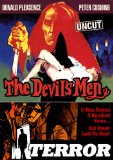| Reviews & Columns |
|
Reviews DVD TV on DVD Blu-ray 4K UHD International DVDs In Theaters Reviews by Studio Video Games Features Collector Series DVDs Easter Egg Database Interviews DVD Talk Radio Feature Articles Columns Anime Talk DVD Savant Horror DVDs The M.O.D. Squad Art House HD Talk Silent DVD
|
DVD Talk Forum |
|
|
| Resources |
|
DVD Price Search Customer Service #'s RCE Info Links |
|
Columns
|
|
|
Katarina's Nightmare Theater Double Feature: The Devil's Men (Land of the Minotaur) and Terror (1978)
Reviewer's note: This review is based on a promotional screener (sans box or artwork) not a final, shelf-ready disc. Therefore, as is the policy here at DVDTalk, audio or video elements won't be rated until we receive a finished product. The review will be amended at that time.
Mid-level junk...but it gets the job done. Scorpion Releasing has another Katarina's Nightmare Theater double-feature for you, showcasing the, um...barely marginal in 70s U.K. horror: the original uncut The Devil's Men from 1976 (known here in the States in a truncated version called Land of the Minotaur), starring Peter Cushing and Donald Pleasence, and 1978's gory British giallo-wannabe, Terror, from cult director Norman J. Warren. Separately, these two low-budget affairs aren't particularly distinguished (Terror does have its moments), but as a double-feature...they're not all that hot, either. But if you have a fondness for these cheap British horror outings from the 70s, this two-fer is acceptable late Saturday night fun. Some half-way decent bonuses help. Let's look very briefly at each movie.
THE DEVIL'S MEN
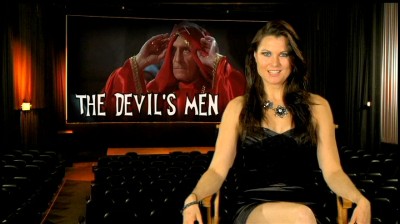
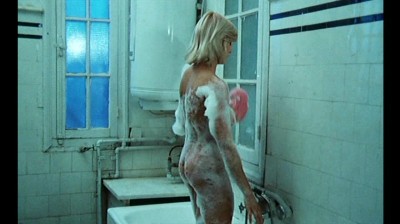
Intensely bald-pated padre, Father Roche (Donald Pleasence), knows something is wrong in his tiny, remote Greek village―young travelers and archaeology students disappear every time they check out the local temple ruins. Former students Ian (Nikos Verlel Verlekis), his girlfriend Beth (Vanna "Gelsomina" Reville), and Christ-look-a-like friend Tom (Robert Behling), have come back to Father Roche's church to show him their latest discovery: a small minotaur relic. Father Roche forbids them to go back to the temple, but they slip out in the middle of the night and run smack dab into a minotaur-worshiping ceremony, led by none other than Baron Corofax (Peter Cushing), a Carpathian ex-patriot who owns the local castle on the hill. Father Roche, realizing he needs help, calls Milo Kaye (Kostas Karagiorgis), his best friend and former student, and now a swinging private dick based in New York City. Milo, a non-believer in all this occult mumbo-jumbo, feels he owes it to his mentor to help out, so he ditches his fine girlfriend (Jane Lyle), and hopes over to Greece, where he teams up with Father Roche and Tom's just-arrived fiancé, stacked Laurie Gordon (Luan Peters), to find their missing friends.
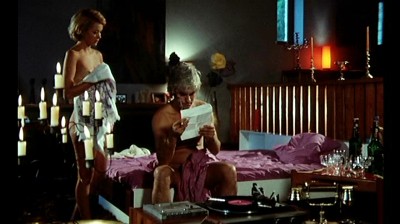
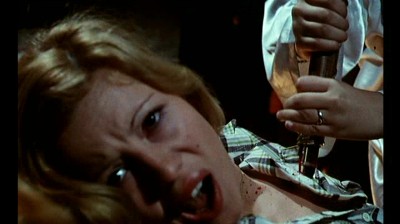
I love seeing that old Crown International Pictures logo. You would think that after decades of reviewing films, I'd be smart enough to remember to watch a movie like The Devil's Men or Terror the "right" way. Obviously, if I can't see them the way they were truly meant to be seen―at a run-down, spooky drive-in or grindhouse―I should have at least waited until the evening to pop this double-feature into my player. Instead, I started to roll The Devil's Men around 9:00am, and after 45 minutes I bailed, fed up with how stupid and boring it was. However, I can't write a review unless I see what I'm reviewing in its entirety (okay for a 90 minute movie...not so good for the entire series run of a TV show) so later that night, around two in the morning, I tried again, and within that viewing context...The Devil's Men was still pretty dumb...but it did play a bit better―don't discount a dark, quiet room, in the middle of the night, to add a bit of atmosphere to a movie that needs all the help it can get.
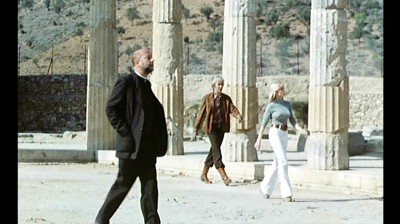
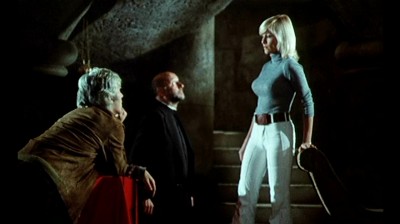
Technically, I guess you can't really call The Devil's Men a U.K. horror movie, because it was financed by Greek investors, for what looks like French subsidiary companies, with a Greek director and Greek actors. Only Cushing, Pleasence, and the remaining English players give it that U.K. imprint (along with the shaky Anglicized dubbing). Written by Arthur Rowe, it's not surprising that the scripter of uneven fare like The Girl From U.N.C.L.E., The Magnificent Seven Ride!, Zeppelin, The Bionic Woman, and Fantasy Island, would help turn out such a hit-and-mostly-miss low-budget horror outing. Indeed, The Devil's Men plays very much like an unexceptional TV episode or movie, with some brief, low-grade nudity and gore thrown in for the grindhouse trade. To be fair, though, it's always tough to call a movie a failure based solely on the script, particularly when it could have been altered (or even thrown out), or botched by the director or editor. But a whole lot of exposition and character development would have to have been hacked away from Rowe's script to explain the final product here.
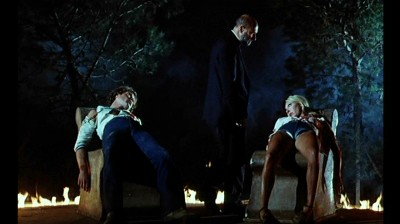
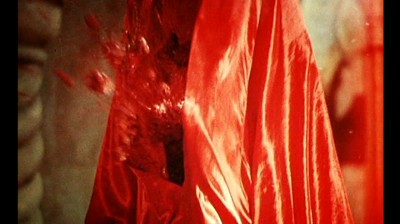
Director Kostas Karagiannis certainly doesn't help matters by shooting everything with an inscrutable, hesitant delay, as if everyone is waiting to hear the word "action" after the cameras have already started rolling. You can take that sort of somnambulant feel The Devil's Men has and just...groove along with it, listening to Brian Eno's ambient, repetitive, and slightly menacing score (no question the best element in the whole movie), and getting into the ineptitude of the production as a kind of half-assed nightmare that doesn't really begin or end, or know where it's going to wind up. Then, The Devil's Men can be kind of lazy fun (at 2 in the morning, mind you)―not scary at all, but odd and creepy in a way, with some tame gore to kick you a little bit. And there's certainly nothing wrong with checking out the good-looking performers here, either, regardless of whether or not they can act (after all, that's why it's called exploitation cinema). Jane Lyle looks just fine after a shower, while pneumatic Luan Peters is an architectural wonder of cantilevered pulchritude when she's strolling among the temple ruins (and if you're into dudes, Robert Behling has that whole Jesus/Charlie Manson/Rasputin thing going on).
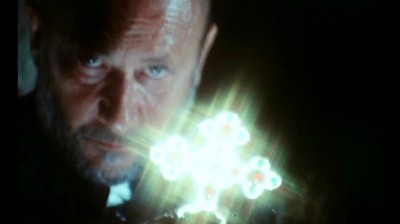
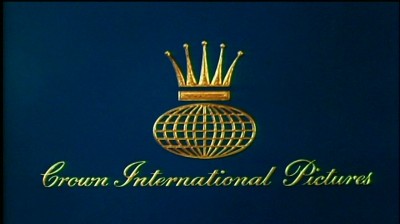
I wouldn't know who's looking at Cushing or Pleasence for some eye-candy thrills, but as for their performances here...they're hardly thrilling. Cushing by this point in his career didn't have to do anything but show his skull and crossbones face to give any character he played a bit of old school horror gravitas, but "phoning it in" comes closest to describing the level of intensity he's giving director Karagiannis here. As for Pleasence, he's doing his same "intense staring combined with little bits of whining/crabby mumblings-shouts" shtick that was all too familiar by 1975 (The Devil's Men didn't make it here to the States, as Land of the Minotaur, until two years later). One can't really blame them, though, when one sees what they have to work with in this low-budget, low-energy project. Getting past the atmosphere...what the hell is The Devil's Men about, anyway? What's the deal with the minotaur? Why does he need couples as sacrifices? What's Carpathian Cushing doing in Greece? Why the hell is Milo even involved here, since he can't seem to do anything? We never know, because the movie makes the fatal error of not having a final scene (or a beginning one, or a middle one) where Cushing tells us what, exactly, is up. So in the end, we simply don't care.
TERROR
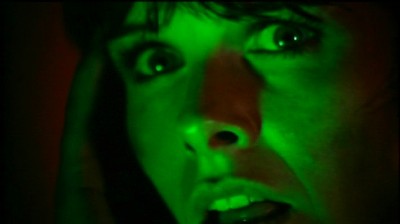
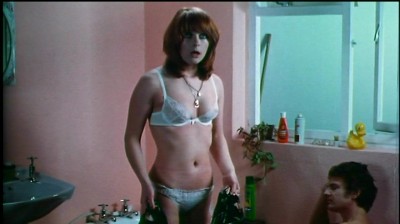
1675 England, during the witch hunts. Lord and Lady Garrick (William Russell and Mary Maude) have successfully brought the village's fleeing witch (Pattie Love) to bay, and now it's time for a cleansing bonfire―a verdict that brings an eternal curse down on the Garrick name, and a quick dispatch of both Lord and Lady after the fact from the crispified witch. But surprise―this opening sequence is actually the finale of modern-day film director James Garrick's (John Nolan) latest project...based on his own true family history. Gathered together at his ancestral home, Buttercup Larch, Garrick and his friends―co-worker Philip (James Aubrey), blonde B-movie actress Carol Tucker (Glynis Barber), and friend Gary (Michael Craze)―entertain themselves after the showing with a little hypnotism bit from Gary and Carol. But when James' new-found cousin, Ann (Carolyn Courage) gets in on the act, while in a trance she almost lops James' head off with a battle sword. This is small potatoes compared to what happens to Carol; walking home to her actress hostel, she's viciously stabbed over and over again, winding up pinned to a tree with knives. Ann, who lives at the same hostel, comes home and washes some suspicious blood off her hands, while roommate Suzy (Sarah Keller) looks on in alarm. What follows is an unending series of graphic slayings as we try to decide who's killing whom...and why.
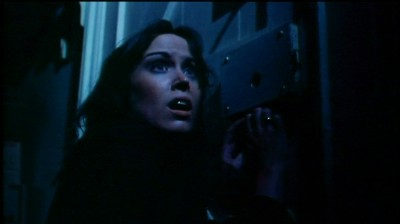
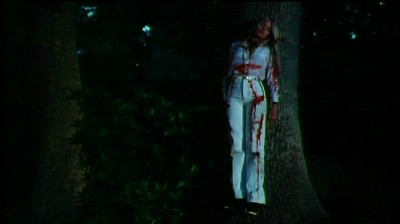
You don't even have to know the conventions of giallo filmmaking to figure out that Terror is a lift of Argento's classic Suspiria―English director Norman J. Warren (the classic Inseminoid) all but uses the words "ripped off" when speaking about that Italian shocker and the influence it had on him and Terror. As to whether or not Warren gets Argento down or not isn't too hard to figure out, either: he doesn't, but it's not an ignoble effort, either. While Warren and his production team don't have quite as refined a visual sense as Argento's work, you can see them striving for that "Italian look" with several stylized sequences that ape giallo conventions (the opening credit sequence, with the shock stills colored red and green, the futuristic-looking tube car, the garishly-lit sets at Garrick's studio when Philip is killed). As for the story, I'm not sure it works in David McGillivray's (House of Whipcord, Satan's Slave) script to have Hammer gothic elements (the whole medieval witch angle) making up the spine of this "New Wave" shocker; somehow the marriage of the two seemingly incongruous components lessens the effectiveness of each―it comes out neither particularly good Hammer, nor completely urban, cold, nasty giallo.
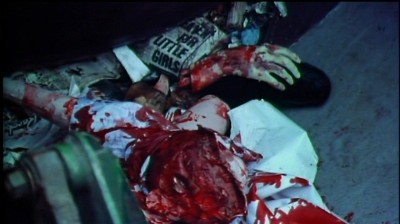
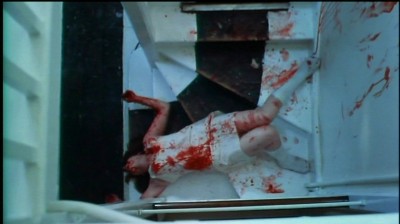
Still...there are some surprisingly effective moments in Terror that almost redeem it. McGillivray's sense of humor comes through occasionally, with Gary getting a solid laugh when the movie-within-a-movie ends and he promptly opines, "What a load of rubbish." The whole soft-core "Bathtime with Brenda" is quite amusing, too, with its cynical look at the decidedly unromantic aspects of grungy low-budget filmmaking (I love the unenthusiastic, uninspired cries of "passion" that Peter Attard and Tricia Walsh summon up for each other as they unconvincingly try to simulate sex in a tub). As well, a few of the extended murder scenes are convincingly designed, included the horrific staircase stabbing of Walsh (that close-up of the knife going through her foot is inexplicably good), the floating, spinning car up in the trees (fantastic lighting effects on Keller in the car), and the rather remarkable attack on Aubrey at the film studio, where reams of 35mm negative engulf him like Amazonian creeper vines, smothering him before he's decapitated by a piece of glass. On the whole, Terror may be derivative and not nearly as accomplished as those movies that inspired it...but it does have a few inspired moments, and sometimes, that's enough.
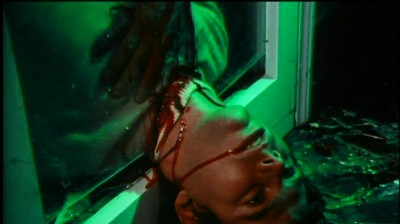
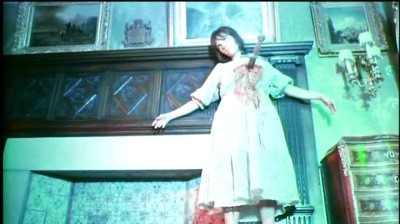
The DVD:
The Video:
No rating: please see first paragraph above.
The Audio:
No rating: please see first paragraph above.
The Extras:
Professional wrestler Katarina Leigh Waters is back, providing bookend bumpers with little tidbits of info on the films' productions (and even smaller amounts of forced humor). Also included is a quite detailed featurette, Bloody Good Time, that features the cast and crew of Terror, giving lots of details on the making of the film. Two deleted scenes from Terror, with commentary by the director, are included, as well as original trailers for the two main features, and several other titles from Scorpion Releasing.
Final Thoughts:
Not the greatest double-bill of 70s U.K. horror...but it will do in a pinch. The Devil's Men barely squeaks by on some unintentional atmosphere (created, perhaps, because nobody knew what the hell they were doing) and the barely-there presence of U.K. horror icons Peter Cushing and Donald Pleasence. Dario Argento giallo knock-off Terror, however, manages to have a few inspired moments here and there, while delivering the (now relatively tame) 70s gore we expect. For horror fanatics and lovers of 70s British filmmaking, I'm recommending this double feature. Casual viewers, though, should rent, first.
Paul Mavis is an internationally published film and television historian, a member of the Online Film Critics Society, and the author of The Espionage Filmography.


|
| Popular Reviews |
| Sponsored Links |
|
|
| Sponsored Links |
|
|
| Release List | Reviews | Shop | Newsletter | Forum | DVD Giveaways | Blu-Ray | Advertise |
|
Copyright 2024 DVDTalk.com All Rights Reserved. Legal Info, Privacy Policy, Terms of Use,
Manage Preferences,
Your Privacy Choices | |||||||









